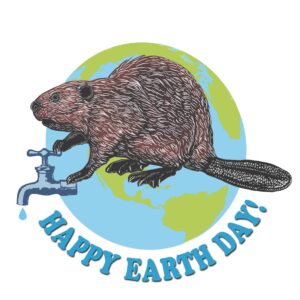 After being so elated to see the latest phys.org headline on using mapping to find the deepest beaver ponds that sink nitrogen, I was mortified to read this headline from the self righteous “Earth.com” which read the exact same article but with some kind of opposite filter turned on. Just check out their headline:
After being so elated to see the latest phys.org headline on using mapping to find the deepest beaver ponds that sink nitrogen, I was mortified to read this headline from the self righteous “Earth.com” which read the exact same article but with some kind of opposite filter turned on. Just check out their headline:
Which beaver ponds contribute to nitrogen pollution?
Since nitrogen is a chemical element frequently used in synthetic fertilizers and naturally found in manure, agriculture and grazing have recently contributed to pollution in the Western United States, leading in some cases to eutrophication – an excess of nutrients causing harmful algal blooms, dead zones, and fish die-offs – downstream.
While scientists have long known that beaver ponds contain nitrogen, chemical testing to assess whether specific ponds are storing or releasing nitrogen can be expensive and tedious, and thus, the question of whether beavers should be reintroduced or not to certain ecosystems is difficult to answer. Now, a team of researchers led by Utah State University has proposed a simple mapping of beaver ponds’ depths and sediments to clarify whether the ponds are nitrogen sources or sinks.
Because you know how it is. Some beavers are helpful and others are just a complete waste of space. Always mudding up your ponds and ruining things.
“It depends on the river, but for sites like the one we studied, reintroducing beavers could be a wise decision,” said lead author Desneiges Murray, a biogeochemist at the University of New Hampshire who conducted the research during her graduate studies at Utah State University. “These ecosystems evolved with beavers in the first place. So, the combined effects of less erosion, better resistance to forest fires, more water storage during droughts, and now the benefit of long-term nitrogen storage – there are lots of reasons humans should be facilitating beaver recolonization into their natural habitats.”
The researchers focused on a beaver pond system (known as a beaver complex) from the Bear River Mountains north of Salt Lake City, and defined five zones based on water flow, pond depth, sediment thickness, and grain size. For each of these zones, they gathered data on nitrogen and oxygen concentrations, collected sediment samples, and analyzed nutrient changes over time in long cores of sediment, while paying special attention to the ratio between sediment depth and water depth.
Well isn’t that interesting. The deeper ponds filter out more nitrogen and the longer a beaver pond has been allowed to be tended by live beavers the deeper it gets. And hey, I bet beaver ponds that are trapped out or blown up don’t remove any nitrogen at all, do they?
The analyses revealed, while ponds with thicker organic-rich sediments and shallow, low-oxygen water are more likely to store nitrogen, faster moving ponds with more oxygen and less sediment are more likely to release nitrogen. “This tight relationship we found between the shape of a beaver pond and its chemistry is really compelling, and those are basic measurements anyone with a science background could conduct,” Murray explained.
Employing such a simple method of mapping beaver ponds could be of crucial help to land managers and conservationists to detect which ponds are sponging up nitrogen and which ones are releasing it, and thus clarify the degree to which specific ponds contribute to nitrogen pollution.
Raise your hands if you think mature healthy beaver bonds store MORE nutrients and thus more nitrogen and broken or failed beaver dams store less. Are you raising your hand? What an INCREDIBLY stupid article and headline.
Here’s some better fair for your earth day viewing:






































